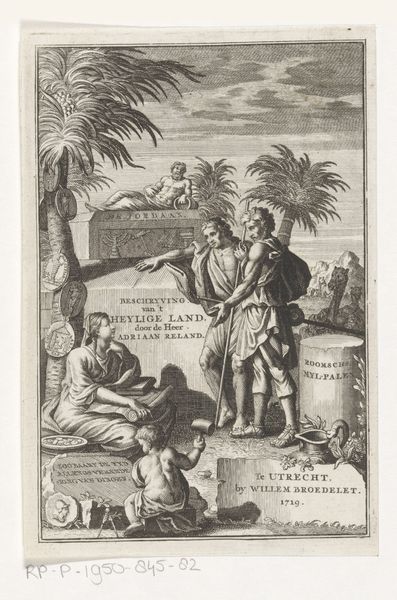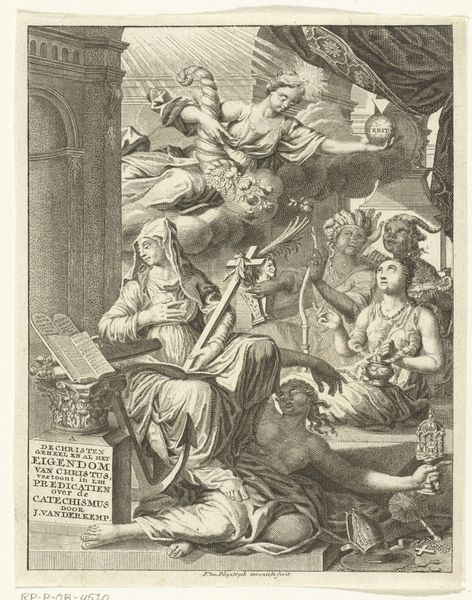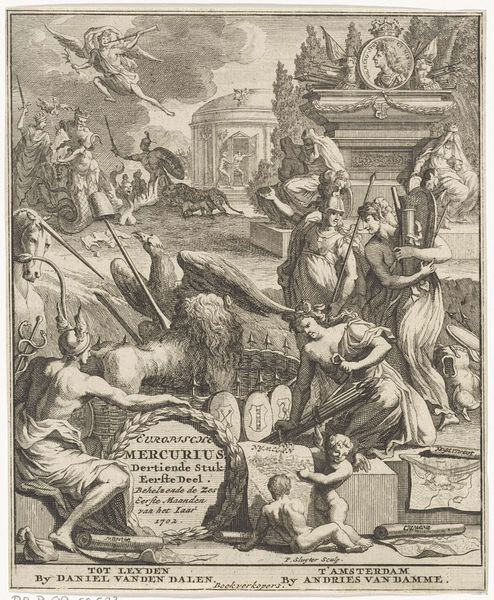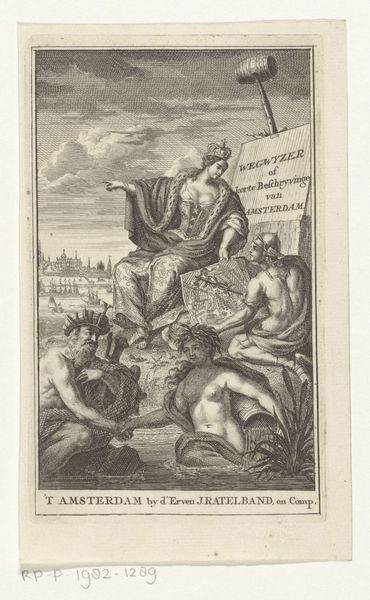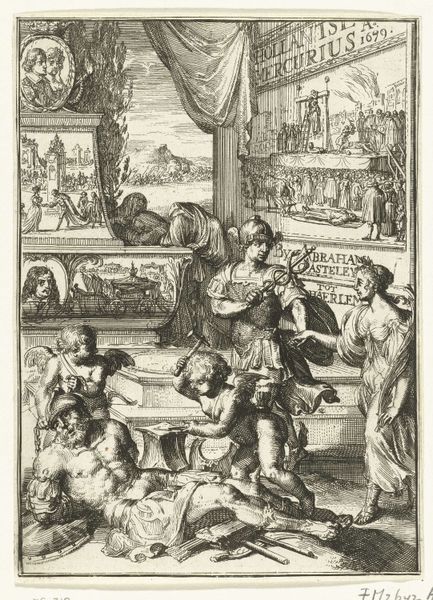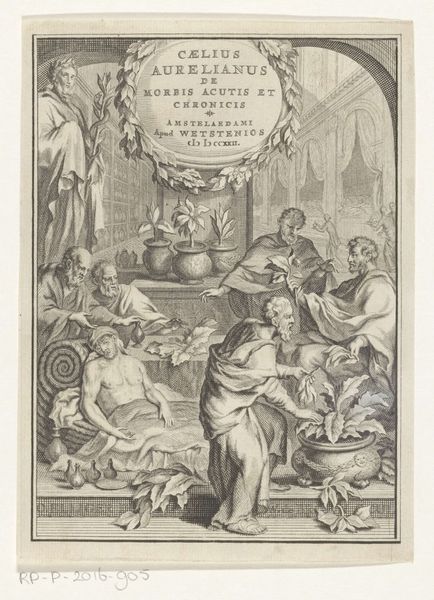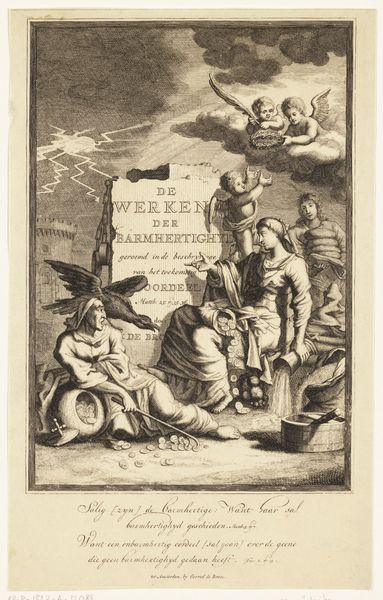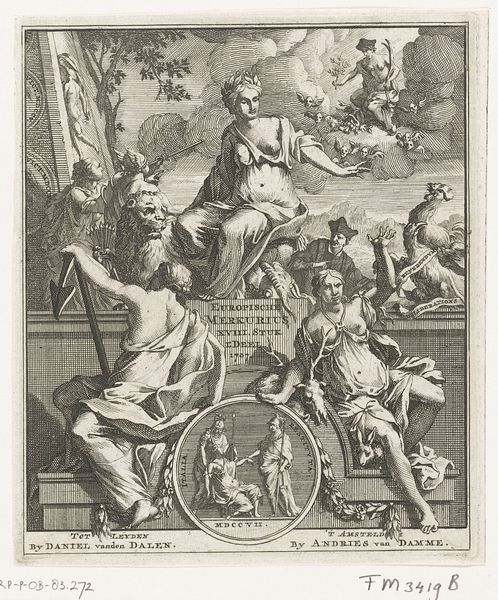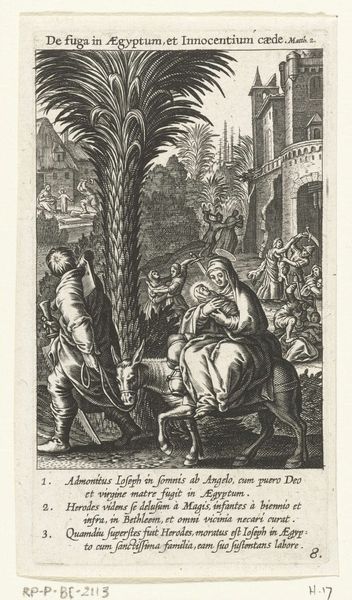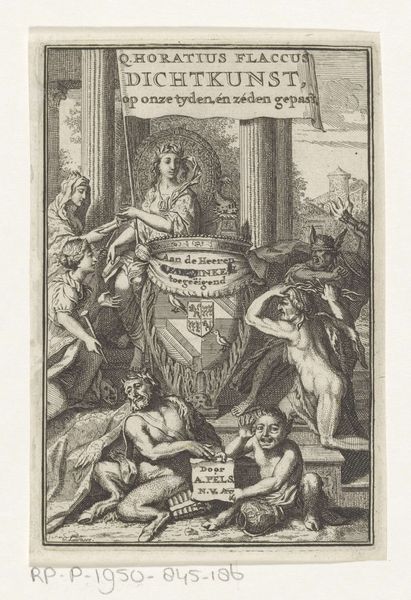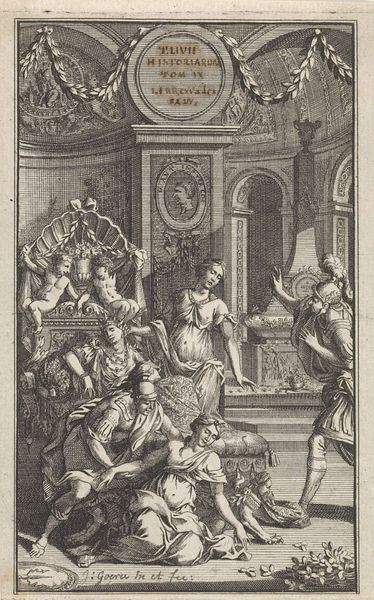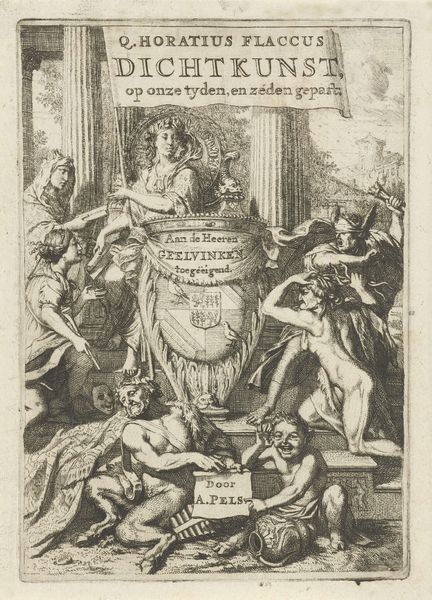
engraving
#
pen illustration
#
pen sketch
#
landscape
#
figuration
#
history-painting
#
academic-art
#
engraving
Dimensions: height 178 mm, width 135 mm
Copyright: Rijks Museum: Open Domain
Editor: Right now we’re looking at "Three Figures from Biblical Palestine," an engraving made in 1714 by Jan Goeree. It feels a bit like a staged tableau vivant, an attempt to depict a specific time and place. What do you see in this piece, especially considering its historical context? Curator: It's fascinating how Goeree constructs "Palestine" through a very specific European lens. This image operates within a long history of Orientalism, where the "East" is imagined and represented to serve European interests and understandings. Consider, for example, how Biblical narratives were often visualized to justify colonial ambitions or reinforce existing power structures. Do you notice anything specific in the imagery that might point to a political subtext? Editor: I do see the inscription referencing ancient monuments, and it appears he's meticulously documenting a very specific location through both figuration and what looks like cartography on the bottom. Is the work implying a deep dive into a civilization on the part of the Dutch? Curator: Exactly. The act of illustrating and documenting Palestine – ostensibly rooted in Biblical history, although heavily skewed toward academic depictions— simultaneously claims a kind of intellectual ownership over that space and its history. Also, we should consider where this image would have been seen, most likely circulating amongst intellectual elites, solidifying a very particular and politicized view of Palestine within that social sphere. Who would have had access to view, engage with, and interpret this image in the 18th century, and how might it have been utilized as source material? Editor: So it’s not just an innocent illustration. It's contributing to a broader narrative and almost shaping a European perspective, through very intentional curation and choices about how this region is visualized and disseminated. Curator: Precisely! It makes you wonder about the power dynamics embedded in image-making, even centuries ago. It encourages a critical assessment of the institutional forces involved, like how knowledge about "other" cultures is produced, circulated, and weaponized to meet Europe's particular political, theological, or commercial aspirations. Editor: That really changes how I look at the image. Thank you.
Comments
No comments
Be the first to comment and join the conversation on the ultimate creative platform.
